The ornamental deciduous plant Kokhia is part of the Marevye family. This plant is native to Africa and East Asia. It is widely cultivated in almost every corner of the planet Earth. Kohia is also popularly called bassia, annual cypress, prutnyak, summer cyprus, izen and broom grass.
Kohia is a dense, slender and low bush that can decorate any garden plot with its unusual appearance. It is used to decorate borders, fences and flower beds. And the fact that this plant is distinguished by its unpretentiousness and undemanding care makes it even more popular among gardeners.
Content
Features of kochia
Cochia is an ornamental deciduous plant that is cultivated as an annual or perennial. Her crown is fast growing. The genus is represented by both dwarf shrubs and herbaceous plants. Already in the first days of June, kochia bushes become as decorative as possible and remain so until the first frost. The average height of the bushes is about 0.6-0.8 m. They include a large number of thin stems that branch strongly along the entire length. At the base of the bush there is a lignified erect stem.
Many of those who saw the kohija for the first time in their lives believe that it is a coniferous plant. This is due to the fact that the leaf plates of such a plant are very narrow and outwardly similar to needles. The top of the stems and leaves are soft and pleasant to the touch. There is a short pubescence on the surface of the leaf blades. While the bush is young, its foliage is painted in a pale green color, but after a few months it changes to crimson or pink.
Such decorative shrubs not only have attractive foliage, they also bloom. However, the flowers are very small, so they are not particularly decorative. They grow from the axils of the apical leaf plates and are part of the panicles. If pollination occurs, then fruits will form on the bush, which are very small nuts. Each fruit contains one seed that remains viable for 2 years.
Growing from seeds
Cochia can be easily grown from seeds either through seedlings or by sowing them directly into open ground. Sowing seeds for seedlings is carried out from the last days of March to the end of April.To do this, not very tall small boxes need to be filled with a substrate consisting of sand and garden soil. Experts advise, be sure to disinfect the soil mixture by calcining.
To begin with, moisten the surface of the soil mixture in a box from a spray bottle, and then proceed to sowing, and you should try to distribute the seeds evenly. They are not buried or sprinkled with soil mixture from above, but only slightly pressed into the substrate, using a flat plank for this. Transfer crops to a lighted place, and the optimum air temperature should be between 18-20 degrees.
After the seedlings appear, they are rearranged to a cooler place (about 10 degrees). When 3 true leaf plates are formed on the bushes, they should be cut into small containers. In a pot that reaches 10 centimeters in diameter, you can plant 3 seedlings at once. In the last days of May, after the end of spring frosts, seedlings are transplanted into open ground, while they should have a height of about 10-15 centimeters. Such a plant needs space, in this regard, during the planting of seedlings in the open ground, a distance of 0.3 meters is left between them.
Cochia can be sown directly into the garden. As a rule, this is done in the southern regions, where the climate is mild, and the period from mid to late May is best for this. Some gardeners prefer to sow kohija before winter in the fall, in which case the seedlings will appear immediately after the snow melts. If in your garden there are favorable conditions for the growth of such a shrub, then abundant self-seeding is not excluded. The seeds of such a plant do not die from not very large frosts, but they will be detrimental to seedlings.
Before starting sowing, dig up the soil, while adding a little sand and peat to it. Level the surface of the soil and distribute small seeds evenly on it. After that, the crops must be watered carefully. The first seedlings should appear after 10-12 days.


Watch this video on YouTube
Outdoor Cochia Care
Caring for a kochia is very easy. It is distinguished by its unpretentiousness and is very tenacious. But this is only if you choose the most suitable place for growing it.
Illumination
In nature, kohija prefers to grow in desert as well as rocky areas. Therefore, sunny areas are best for her in the garden. However, you can also plant it in a little shade, but in this case the bushes will be elongated and looser.
Priming
Choose an area where the soil is water and air permeable (well drained). The ground should also be slightly acidic or neutral. During the season, do not forget to loosen the soil several times and remove weeds from it in a timely manner. Low-lying areas that are flooded by rain or melt water cannot be used to grow this plant. Also, kochia is not suitable for growing in a pot, as its root system needs space. If you nevertheless decide to plant a bush in a pot, then remember that when the root system becomes cramped in the container, the growth of the crown will stop and the plant will bloom. The same problem can arise if the plantings of kochia are very thickened, that is, the bushes are planted too close to each other.
Watering
This plant is resistant to drought, in this regard, it can not be watered at all, as it will have enough natural precipitation. However, during a prolonged drought, the foliage of the bushes may begin to fall, in this case it is better to water them.
Top dressing
In order for the kochia to grow intensively and be as effective as possible, it should be systematically fed. The first time this is done half a month after landing in open ground. Further feeding is carried out once a month. For this, you can use both organic and mineral fertilizers.After pruning, the bushes are additionally fed, this speeds up their recovery.
Pruning
Such a shrub has a very dense crown, which is also uniform. That is why the bush can be given almost any shape. For example, the crown can be shaped into a geometric figure, and if you wish, you can make a complex garden sculpture from a bush. The stems are characterized by rapid growth, in this regard, pruning can be carried out quite often (1 or 2 times in 4 weeks).


Watch this video on YouTube
Diseases and pests
This plant is highly resistant to both pests and diseases. However, with prolonged stagnation of moisture in the roots, they can rot. Most often, cochia is harmed by spider mites. As soon as you suspect the presence of a pest, immediately treat the bush with an insecticidal solution.
Cochia in landscape design
Kohia is widely used in landscape design. For example, lonely bushes are planted on the front flowerbed and give them an intricate shape. You can plant several bushes at once and make up a whole ensemble of them. You can also plant cochias with different shades of leaves next to it, which will also look quite impressive. Low-growing varieties are used to decorate garden paths or lawns.
This shrub is very often grown in rock gardens, rockeries, as well as not far from fountains and against the background of large stones. Hedges are created from tall varieties, and they are also used to decorate farm buildings.
Varieties with emerald foliage are the perfect backdrop for brightly flowering plants. Sometimes kohija is planted in a group, creating the effect of a vase, while tall, spectacularly flowering plants are grown inside it. In the middle of the lawn, it is recommended to grow varieties with purple or crimson leaves.
Beneficial features
Kochia has medicinal properties and is also used as a forage crop. In alternative medicine, alcoholic tinctures and decoctions are prepared from seeds and young stems, which differ in their diuretic, stimulating, antimicrobial, diaphoretic, laxative and cardiotonic effect.
Means prepared on the basis of such a plant are used in the treatment of erysipelas, eczema or gonorrhea. And in oriental medicine, kohija is used to prepare a cream that can strengthen both the skin and the nail plates.
After cutting the bushes, the young stems can be fed to livestock. Kohija is used to grow silkworms on specialized farms. There are countries where young leaves of this plant are used in the preparation of first courses. And you can also get soda from such a shrub.
Types and varieties of kohija with photos and names
The genus Kokhia unites about 80 species. In mid-latitudes, only a few of them are cultivated in gardens:
Cochia corona
The short bush has a spherical shape, it is distinguished by its unpretentiousness and resistance to drought. In autumn, the color of the foliage changes to burgundy red. This species is not afraid of even small frosts. In this regard, it is able to maintain its decorative effect until late autumn.
Cochia hairy
In this species, the bushes are slender and have an elongated shape, they reach a meter in height, and in width - from 0.5 to 0.7 meters. The leaf plates are narrow, and there is pubescence on their surface. They are painted in a greenish color, which changes to burgundy in autumn. Such kochia prefers well-lit areas and grows normally in depleted soil.
Kohia Childs
The height of such a compact ball-shaped plant is about half a meter. The branching stems are covered with lush greenish foliage. Its color remains unchanged throughout the year.
Breeders, using these three species for their work, were able to obtain several varieties of kochia, which are highly decorative:
Sultan
The height of a slender bush varies from 0.7 to 1 meter. At the beginning of the season, the foliage is painted in an emerald hue, and at the end - in burgundy. The plant tolerates pruning normally.
Acapulco Silver
The bushes have a spherical shape, and are decorated with green leaf plates, the edge of which is silvery. In autumn, they change their color to crimson.
Nephritis
This variety is distinguished by its rapid growth, and the bush reaches a height of about 100 cm.It is often used to form green sculptures.
Flame
The crown has a columnar shape, the bush itself can reach a height of 0.8 to 1 meter. In autumn, green foliage turns into a crimson hue. The plant is able to withstand slight frosts.
Shilzy
The bushes are dense, one meter in height, and in diameter they reach about 0.6 m. Green foliage in the summer begins to change its color to purple-red.


Watch this video on YouTube

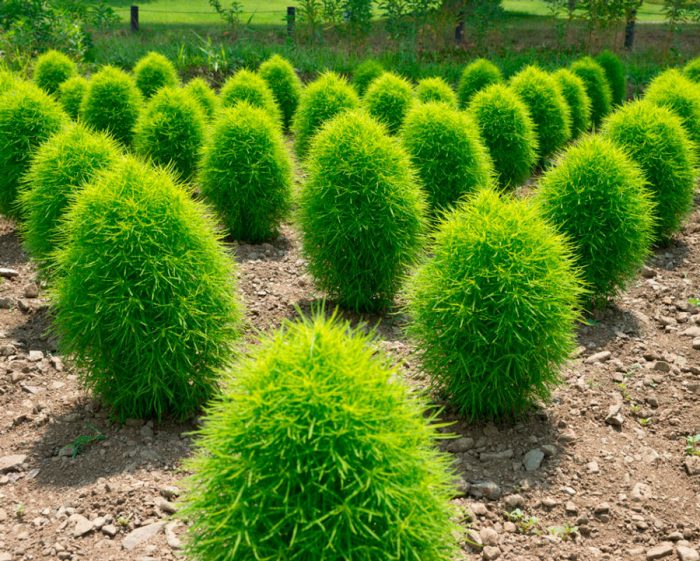
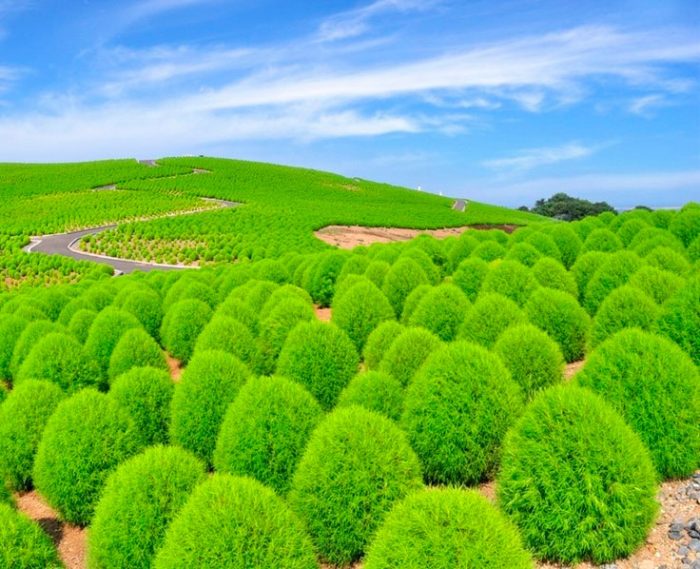
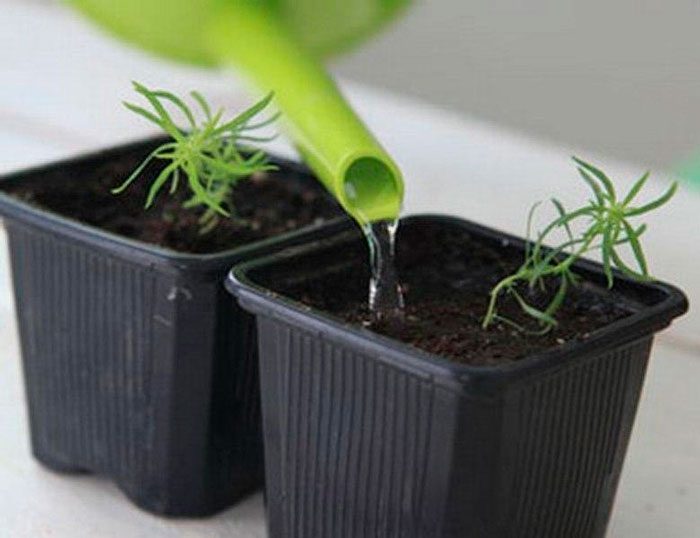

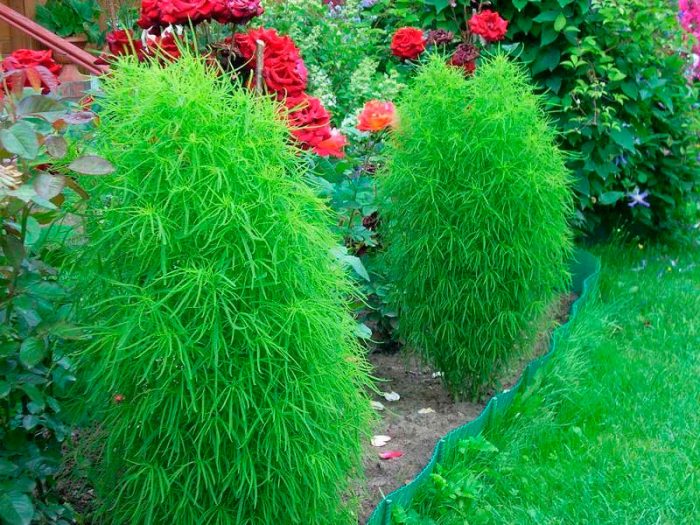
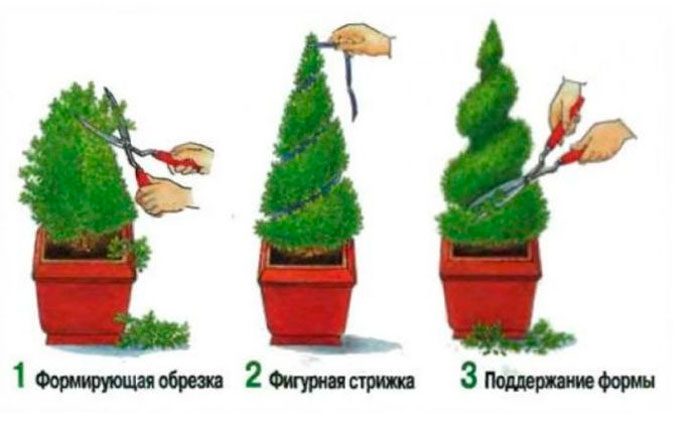
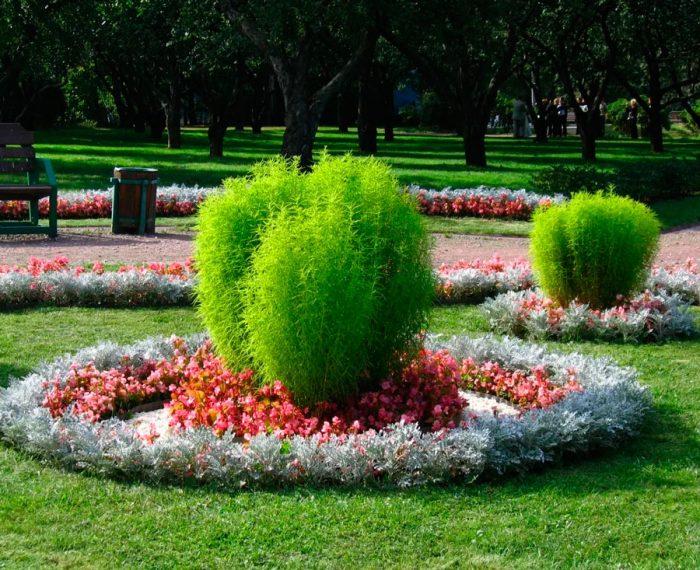
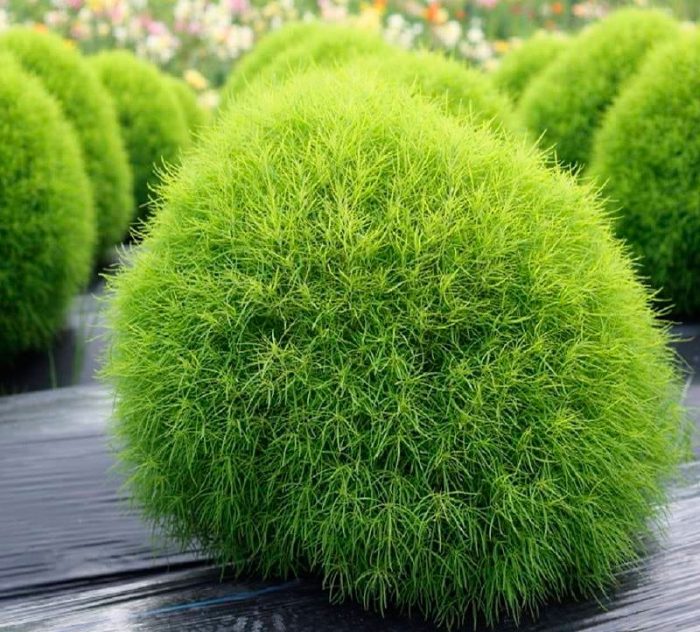
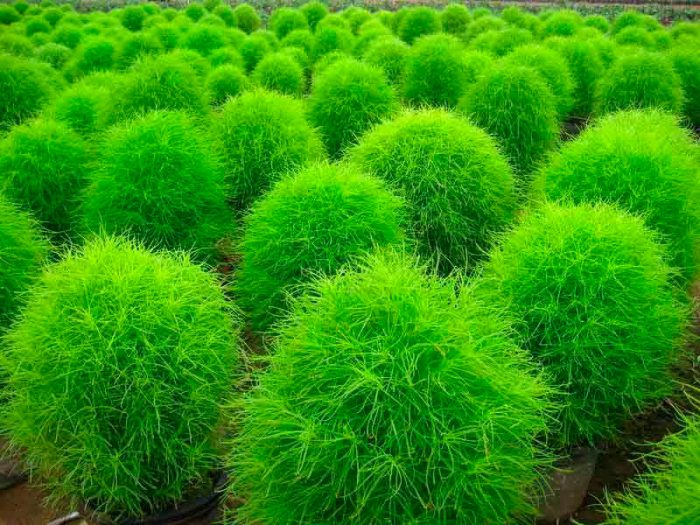
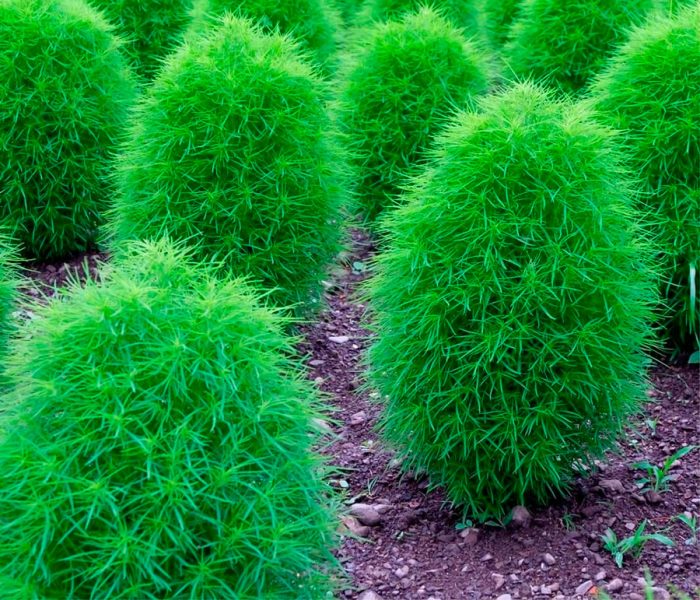
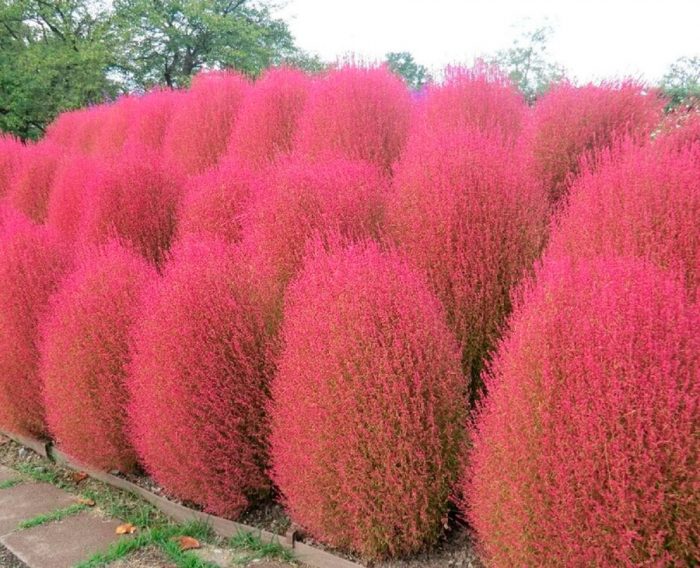
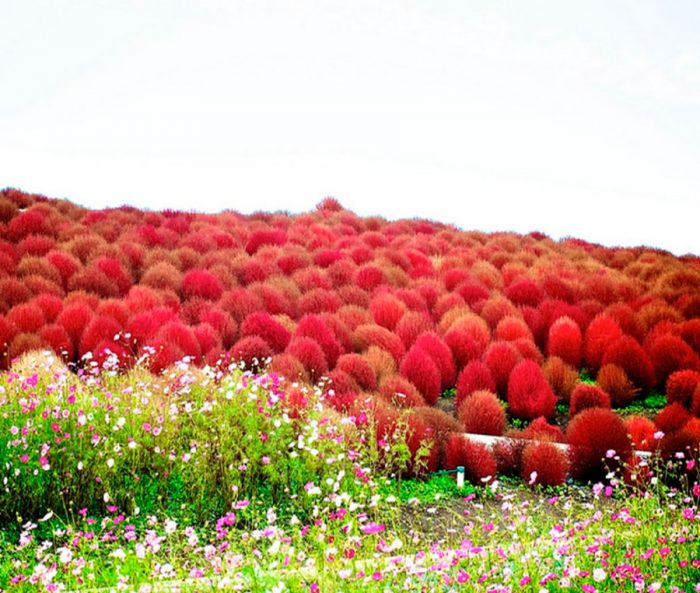
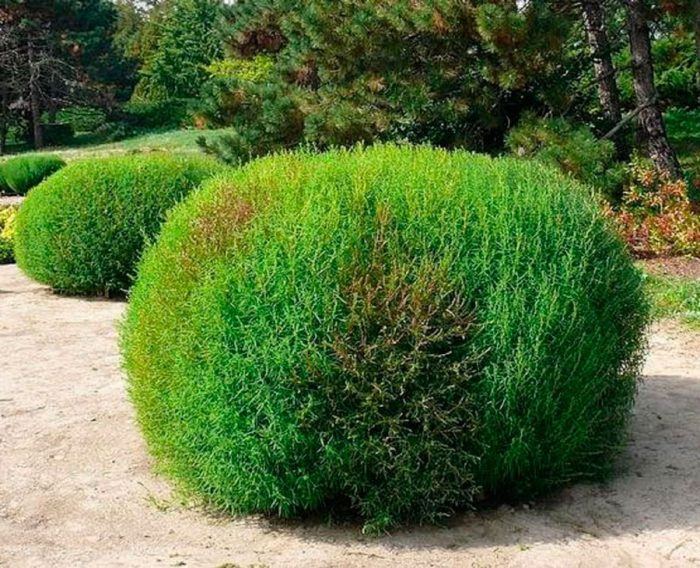
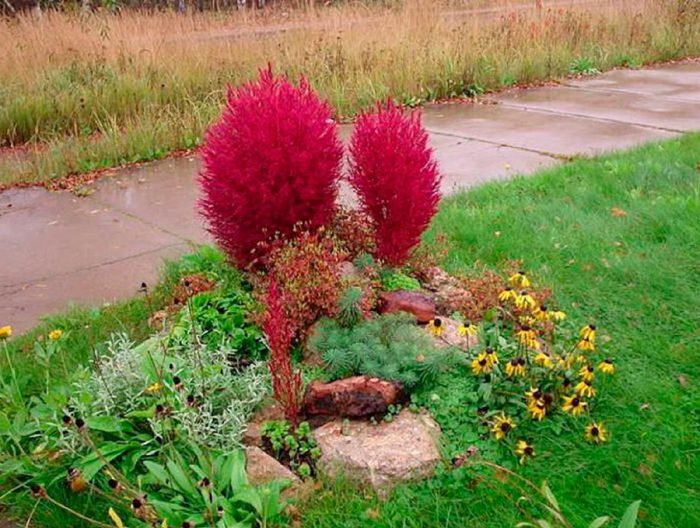
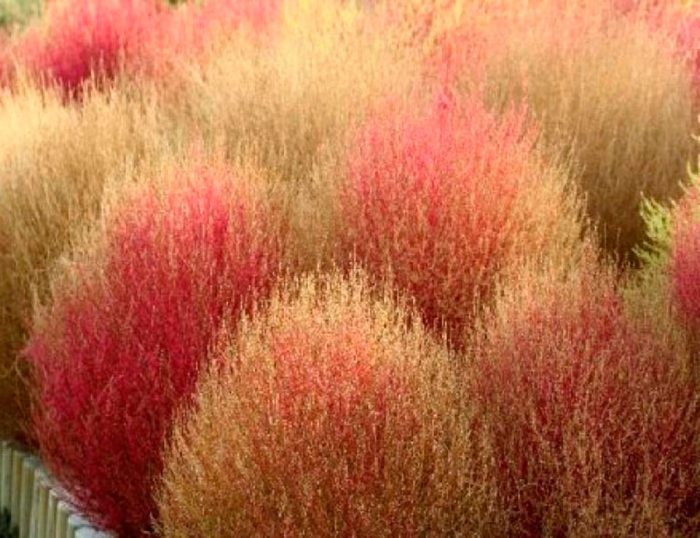








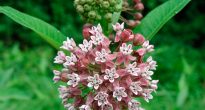

Thanks for the informative, full description of everything there is to know about the plant. Do not subtract, do not add. Maximum information.